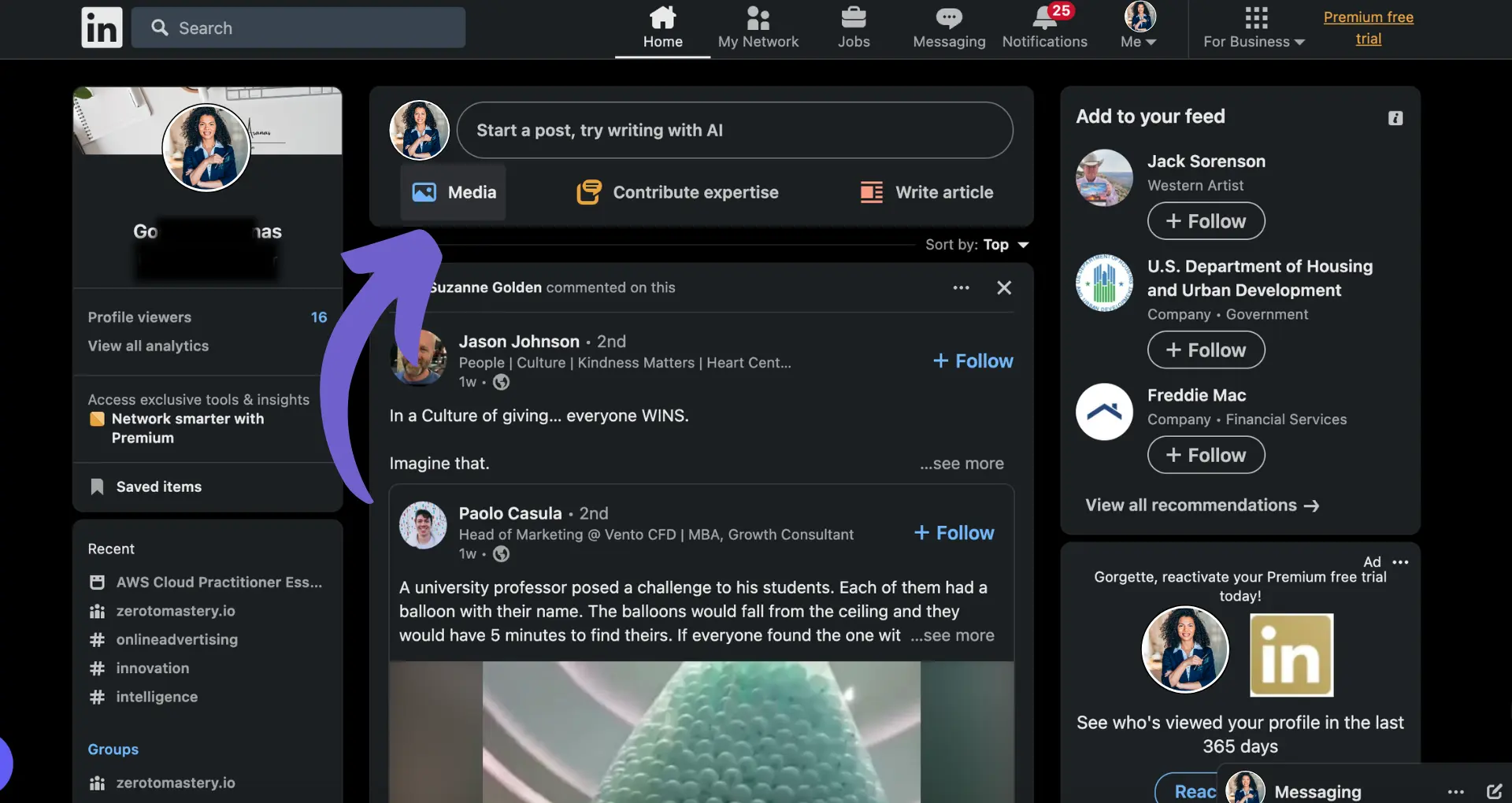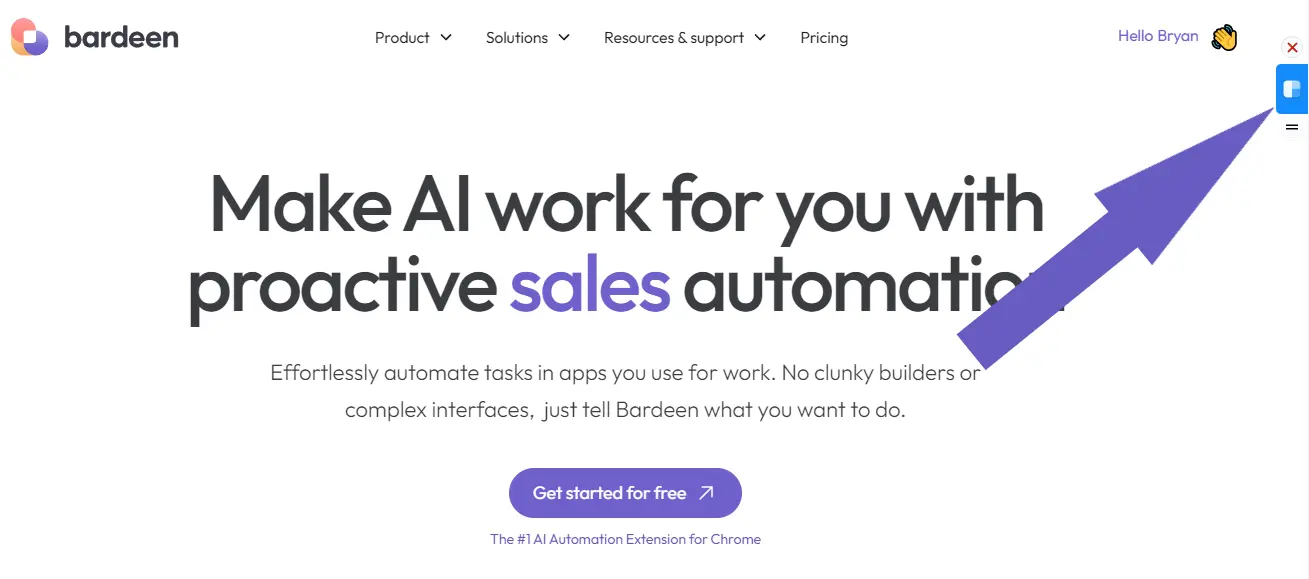





Follow Bardeen's 5-step plan to recover your hacked LinkedIn account.
By the way, we're Bardeen, we build a free AI Agent for doing repetitive tasks.
If you're dealing with LinkedIn issues, check out Bardeen's LinkedIn tools. They help automate tasks and manage your account securely, saving you time and effort.
Has your LinkedIn account been compromised? You're not alone. According to recent statistics, over 500 million LinkedIn users' data has been exposed in data breaches. But don't panic - this step-by-step guide will walk you through the process of recovering your hacked LinkedIn account and securing it from future attacks.
We'll cover everything from identifying the signs of a breach to rebuilding your professional presence on the platform. Ready to take back control of your LinkedIn account? Let's dive in!
LinkedIn hacks can be devastating, exposing your personal data and damaging your professional reputation. Hackers may gain access through phishing attempts, weak passwords, or outdated software. Here are key signs your account has been compromised:
If you notice suspicious activity like unknown connections, messages, or posts, or receive an email from LinkedIn about a login from an unrecognized device or location, your account may be hacked. You may also be unable to log in with your correct password or see unfamiliar changes made to your profile information and settings.
One telltale sign of a hacked LinkedIn account is suddenly being locked out, even when entering the right password. This indicates a hacker has gained access and changed your login credentials.
For example, say you always use "LinkedIn2023!" to log in. But one day that password doesn't work, and you have to reset it. This is a red flag your account has likely been infiltrated.
Unusual activity on your LinkedIn, such as connection requests you didn't send, posts you didn't make, or messages to your contacts with strange links, is another warning sign.
Maybe you see several new connections you don't recognize or get messages from colleagues about spammy DMs from your account. These are indicators a hacker is using your profile for malicious purposes like phishing scams.
If LinkedIn detects a login to your account from a new device or location, they will alert you via email as a security precaution. While this could be you signing in from a different computer or phone, an unfamiliar device or IP address is concerning.
Say you get an email that your LinkedIn was accessed from Russia, but you've never even been out of the country. That's an obvious sign you've been hacked and need to take immediate action to secure your account.
Hackers may modify your LinkedIn profile in subtle or obvious ways. Editing your name, photo, summary, experience, or other details allows them to impersonate you or draw in new victims.
You might see your profile picture changed, a new job added that you never held, or skills and endorsements you don't have. Keeping tabs on your profile information can help you spot unauthorized changes quickly.
If you notice any of these red flags, it's crucial to report the issue to LinkedIn right away and take steps to regain control of your account. The sooner you act, the less damage a hacker can do with your compromised profile. Consider using LinkedIn integration tools to monitor your account for any unusual activities.
In the next section, we'll cover exactly what you need to do if your LinkedIn account does get hacked and guide you through the process to recover your account.
If you suspect your LinkedIn account has been compromised, time is of the essence to regain control and minimize potential damage. Hackers may send spam messages to your contacts, post inappropriate content, or even impersonate you. Here are the critical steps to take right away:
If you can still access the email associated with your LinkedIn account, immediately request a password reset. This will prevent the hacker from further accessing your account, even if they changed your password.
Go to the LinkedIn login page, click "Forgot password," and enter your email. Follow the instructions in the reset email to create a new, strong password. Avoid reusing passwords from other sites.
Whether or not you can still access your account, promptly reach out to LinkedIn's customer support to report the issue. They have a dedicated form for reporting compromised accounts.
Provide as much detail as possible, such as when you first noticed suspicious activity and any changes made to your account. LinkedIn's team can then investigate and assist you in securing your account.
If you're unable to reset your password via email, check what other account recovery methods you have set up, such as a phone number or alternate email address.
If you have a phone number on file, you may be able to receive a verification code to reset your password. Make sure your contact information is up-to-date for this reason. Learn how to extract phone numbers from LinkedIn to keep your records updated.
Review which third-party apps or services have access to your LinkedIn account. Revoke access for any that you don't recognize or no longer use.
Hackers sometimes use malicious apps to gain access to accounts. Regularly auditing your approved apps can help prevent this and keep your account more secure moving forward.
Acting swiftly and decisively is vital when your LinkedIn account is hacked. By resetting your password, contacting support, checking recovery options, and removing suspicious app access, you can minimize the fallout and regain control.
Next up, we'll explore proactive measures to fortify your LinkedIn account against future hacks. After all, an ounce of prevention is worth a pound of cure when it comes to online security!
After recovering your hacked LinkedIn account, it's crucial to take proactive measures to prevent future breaches. Implementing strong security practices can deter hackers and give you peace of mind. Here are four key steps to fortify your LinkedIn account:
Two-factor authentication (2FA) adds a second layer of protection beyond your password. When signing in from an unrecognized device, you'll need to enter a unique code sent via SMS or generated by an authenticator app.
LinkedIn recommends using an authenticator app like Microsoft Authenticator for the most secure 2FA method. Enable 2FA in your account settings to significantly reduce the risk of unauthorized access, even if your password is compromised.
Craft a complex password that's at least 12 characters long, mixing uppercase and lowercase letters, numbers, and symbols. Avoid using personal information or common words that could be easily guessed.
Crucially, use a unique password for LinkedIn that you don't use on any other sites. Password reuse is a major security risk; if one account is breached, hackers can access others with the same credentials. A password manager can help you generate and securely store strong, unique passwords.
Periodically check the "Your active sessions" section in your LinkedIn settings. This lists all devices and locations currently logged into your account.
If you spot any sessions you don't recognize, click "Sign out" next to them to immediately terminate that access. Regularly reviewing sessions helps catch any suspicious activity early. Be sure to log out of LinkedIn on shared devices.
Phishing attacks often aim to steal login credentials or install malware by tricking you into clicking malicious links or downloading infected attachments. Be wary of messages that create a false sense of urgency or come from unknown senders.
Hover over links to preview the URL before clicking, ensuring it's a legitimate LinkedIn domain. Avoid downloading attachments unless you fully trust the sender and were expecting the file. Vigilance can prevent your account from being compromised.
Implementing these four security measures - enabling 2FA, using strong unique passwords, monitoring active sessions, and being cautious online - creates a robust defense against hackers. Adopting these as ongoing habits is key to protecting your recovered LinkedIn account.
Now that your account is secured, let's explore how to rebuild your LinkedIn presence and reestablish trust with your network after a hack. The next section will guide you through those essential steps to get back on track!
Recovering from a hacked LinkedIn account involves more than just regaining access. It's crucial to clean up any damage done by the hacker and reestablish your professional credibility. Here are four key steps to rebuild your LinkedIn presence:
Once you've secured your account, post an update explaining that your account was compromised but has now been recovered. This transparency helps your connections understand any suspicious activity they may have seen.
For example, "Hi everyone, my LinkedIn account was recently hacked, but I've now regained control. Please disregard any odd messages or posts from the past few days. Thanks for your understanding!"
Carefully review all activity on your account from the time it was hacked. Delete any posts, comments, or messages that the hacker may have sent from your profile.
Pay close attention to your article posts, as hackers sometimes share spam or malicious content. Removing these promptly helps restore your reputation and prevents your connections from clicking unsafe links.
If the hacker removed valuable connections or left important industry groups, take the time to repair that damage. Reconnect with key contacts and explain the situation if needed.
Rejoin groups that are relevant to your field and reintroduce yourself if you were an active participant before the hack. This reengagement helps signal that you're back in control of your account.
To rebuild trust with your network, focus on posting high-quality, professional content in the days and weeks after the hack. Share industry insights, thoughtful articles, and personal updates that reinforce your expertise.
Turn your task of engaging back with your network into a breeze. Use Bardeen's AI message generator to create customized emails and LinkedIn posts easily.
Consistency is key here. Regularly sharing valuable content reminds your connections of your credibility and pushes the hacked period further down your activity history.
By following these four steps - informing your network, removing hacker content, reconnecting with contacts, and sharing valuable insights - you can successfully rebuild your hacked LinkedIn presence. Reclaiming your professional credibility takes effort, but it's well worth it.
Thanks for sticking with this guide to the end! As a token of appreciation, here's a joke: Why was the LinkedIn hacker so unpopular? They kept trying to connect with everyone's "extended network" without permission!
Knowing how to recover a hacked LinkedIn account is crucial for maintaining your professional online presence. This guide covered:
By following the steps to recover a hacked LinkedIn account, you can minimize damage to your professional reputation. Don't let hackers control your career narrative - take charge of your LinkedIn security today!










SOC 2 Type II, GDPR and CASA Tier 2 and 3 certified — so you can automate with confidence at any scale.
Bardeen is an automation and workflow platform designed to help GTM teams eliminate manual tasks and streamline processes. It connects and integrates with your favorite tools, enabling you to automate repetitive workflows, manage data across systems, and enhance collaboration.
Bardeen acts as a bridge to enhance and automate workflows. It can reduce your reliance on tools focused on data entry and CRM updating, lead generation and outreach, reporting and analytics, and communication and follow-ups.
Bardeen is ideal for GTM teams across various roles including Sales (SDRs, AEs), Customer Success (CSMs), Revenue Operations, Sales Engineering, and Sales Leadership.
Bardeen integrates broadly with CRMs, communication platforms, lead generation tools, project and task management tools, and customer success tools. These integrations connect workflows and ensure data flows smoothly across systems.
Bardeen supports a wide variety of use cases across different teams, such as:
Sales: Automating lead discovery, enrichment and outreach sequences. Tracking account activity and nurturing target accounts.
Customer Success: Preparing for customer meetings, analyzing engagement metrics, and managing renewals.
Revenue Operations: Monitoring lead status, ensuring data accuracy, and generating detailed activity summaries.
Sales Leadership: Creating competitive analysis reports, monitoring pipeline health, and generating daily/weekly team performance summaries.